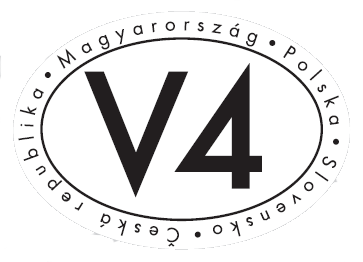Project Publications
| Book 1 | Book 2 | Book 3 | Book 4 | Book 5 | Book 6 | conference articles in journals |
Gubik, A. S., & Bartha, Z. (2014). SME Internalisation Index (SMINI) Based on the Sample of the Visegrad Countries (chapter 2) In: A.S. Gubik & K. Wach K. (Eds.), International Entrepreneurship and Corporate Growth in Visegrad Countries. Miskolc: University of Miskolc (ISBN: 978-3-200-03673-4).
Full text: pdf (free download)
Abstract
The goal of the chapter is to develop an index (Small and Medium-Sized Enterprise Internationalisation Index – SMINI) to measure the degree of internationalisation in the SME sector, and to uncover its most important influencing factors. The index was calculated from a data set obtained from a questionnaire conducted among 1,124 firms from the Visegrad (V4) countries, comprised of 270 Polish, 597 Czech, 113 Hungarian and 144 Slovak firms. The relationship between the index value and the influencing factors was also tested using the same dataset. The influencing factors were chosen based on a literature review. We found that the factors suggested by the literature (company size, company age, ownership structure, innovation activity, network participation and sectorial structure) have a significant effect on the SMINI, but the strength of relationship is either weak or weak to moderate. A multiway ANOVA analysis revealed that three of our variables – firm size, family ownership and innovation – have an 11.8% combined effect on the SMINI.
Keywords: internationalisation, small and medium-sized enterprises, degree of internationalisation
JEL classification: F23, F61, L25, M16
References
Aharoni, Y. (1971). On the Definition of a Multinational Corporation. Quarterly Review of Economics and Business, 11(3), 27-37.
Altomonte, C., Aquilante, T., Békés, G., & Ottaviano, G. (2014). Internationalisation and innovation of firms: Give them one roof. Voxeu: http://www.voxeu.org/article/internationalisationinnovation-and-productivity-firms.
Bell, J., Crick, D., Young, S (2004). Small Firm Internationalization and Business Strategy. International Small Business Journal, 22(1), 23-56.
Cerrato, D., & Piva, M. (2012): The internationalization of small and medium-sized enterprises: the effect of family management, human capital and foreign ownership. Journal of Management and Governance, 16(4), 617-644.
Clerq, D., & Bosma, N. (2004). Why are some firms more internationally committed than others? The role of knowledge, firm development stage and optimism. EIM, SCALES-paper N200408.
Daszkiewicz, N. & Wach, K. (Eds.), (2014). Business Environment and Its Internationalisation – Selected Evidences from CEE and SEE Countries. Gdańsk: Gdańsk University of Technology Publishers.
Dunning, J. H. – Lundan, S. M. (2008). Multinational Enterprises and the Global Economy, Second Edition. Edward Elgar Publishing.
Duréndez, A. & Wach, K. (eds), 2014. Patterns of Business Internationalisation in Visegrad Countries – In Search for Regional Specifics. Cartagena: Universidad Politécnica de Cartagena.
SME Internalisation Index (SMINI) Based on the Sample of the Visegrad Countries.
EC (2007): Observatory of European SMEs. Analytical report. European Commission, Observatory of European SMEs Flash Eurobarometer 196 – The Gallup Organization. http://ec.europa.eu/public_opinion/flash/fl196_en.pdf.
EC (2010). Internationalisation of European SMEs, Final report. EIM Business & Policy Research. Entrepreneurship Unit, Directorate-General for Enterprise and Industry, European Commission, Brussels.
Fernandez, Z., Nieto, M. J. (2006). Impact of ownership on the international involvement of SMEs. Journal of International Business Studies, 37(3), 340–351.
Filatotchev, I., Stephan, J., Jindra, B. (2008). Ownership structure, strategic controls and export intensity of foreign-invested firms in transition economies. Journal of International Business Studies, 39(7), 1133–1148.
Fischer, L. D. (2006). Internationalität der Unternehmung - Aktueller Forschungsstand, Analyse und Konzeptualisierung (Internationality of the enterprise - Current state of research, analysis and conceptualization). Dissertation, Otto-Friedrich-Universität Bamberg.
Gallo, M. A., Garcia Pont, C. (1996). Important factors in family business internationalization. Family Business Review, 9(1), 45–60.
Gemser, G., Brand, M.J., Sorge, A. (2004). Exploring the Internationalisation Process of Small Businesses: a Study of Dutch Old and New Economy Firms. Management International Review, 44(2), 127-150.
George, G., Wiklund, J., Zahra, S. A. (2005). Ownership and internationalization of small firms. Journal of Management, 31(2), 210–233.
Gubik, S.A. (2008). The environmental embeddedness of small- and medium sized enterprises. Business Studies 6(1), 80-88.
Heijltjes, M., Olie, R., Glunk, U. (2003): Internationalization of top management teams in Europe. European Management Journal, 21(1), 89 - 97.
Ietto-Gillies, G. (1998). Different Conceptual Frameworks for the Assessment of the Degree of Internationalization: an Empirical Analysis of Various Indices for the Top 100 Transnational Corporations. Transnational Corporations, 7(1), 17-39.
Kiendl-Wendner, D., J. & Wach, K. (eds.), 2014. International Competitiveness in Visegrad Countries: Macro and Micro Perspectives. Graz: Fachhochschule Joanneum.
Lesch, C. (2005). Internationale Lenker, nationale Kontrolleure – Eine Untersuchung der Internationalität von Vorstand und Aufsichtsrat der DAX-Unternehmen, Bonn: Consultancy Simon-Kucher & Partner.
Mayer, T., Ottaviano, G. I. P. (2007). The Happy Few: The internationalisation of European firms. New facts based on firm-level evidence. Bruegel Blueprint Series. 3.
Oesterle, M-j., Richta, H. N., Fisch, J. H. (2013). The influence of ownership structure on internationalization. International Business Review, 22(1), 187–201.
Perriard, M. (1995). Towards a Measure of Globalization, Institute of Economic and Social Sciences. University of Fribourg Working Paper No. 250.
Prashantham, S. (2005). Toward a knowledge-based conceptualisation of internationalisation. Journal of International Entrepreneurship, 3(1), 37-52.
Ronen, S., Shenkar, O (1985). Clustering countries on attitudinal dimensions: A review and synthesis. Academy of Management Review, 10(3), 435-54.
Rugman, A. M. (2007). Regional Multinationals and the Myth of Globalization. In: Cooper, A.F., Hughes, C.W. and De Lombaerde, P. (eds.): Regionalisation and global governance: the taming of globalisation? New York: Routledge, 99-117.
Schmidt, R. (1981). Zur Messung des Internationalisierungsgrades von Unternehmen (Measuring the degree of internationalization of companies), In: W. Wacker, Hv Haussmann, B. Kumar (eds.): Internationale Unternehmensfuhrung: Managementprobleme international tatiger Unternehmen: Festschrift zum 80. Geburtstag von Eugen Hermann Sieber. Berlin: E. Schmidt,. 57-70.
Shoham, A. (1998). Export performance: A conceptualization and empirical assessment. Journal of International Marketing, 6(3), 59–81.
Siedschlag, I., Zhang, X., Cahill, B. (2010). The Effects of the Internationalisation of Firms on Innovation and Productivity. ESRI Working Paper No. 363.
Sommer, L. (2009). Degree of Internationalization – A Multidimensional Challenge. The Journal of Applied Business Research, 25(3), 93-110.
Sullivan, D. (1994). Measuring the Degree of Internationalization of a Firm. Journal of International Business Studies, 25(2), 325-342.
UNCTAD (2014). World Investment Report – Investing in the SDGs: an Action Plan. United Nations.
Welch, L., R. Luostarinen (1988): Internationalization: evolution of a concept. Journal of General Management, 14(2), 34-55.
Zahra, S. A. (2003). International expansion of U.S. manufacturing family businesses: The effect of ownership and involvement. Journal of Business Venturing, 18(4), 495–512.
Czech Republic
Hungary
Poland
Slovakia

Contact:
Dr hab. Krzysztof Wach
Cracow University of Economics
wachk@uek.krakow.pl
www.wach.uek.krakow.pl

